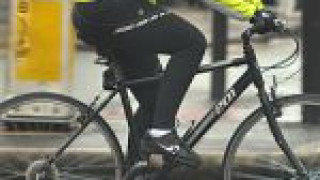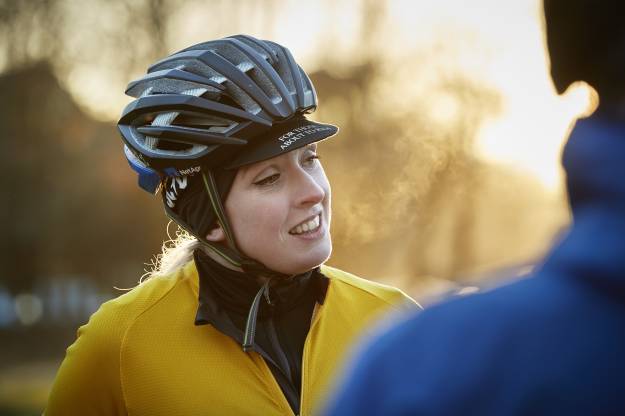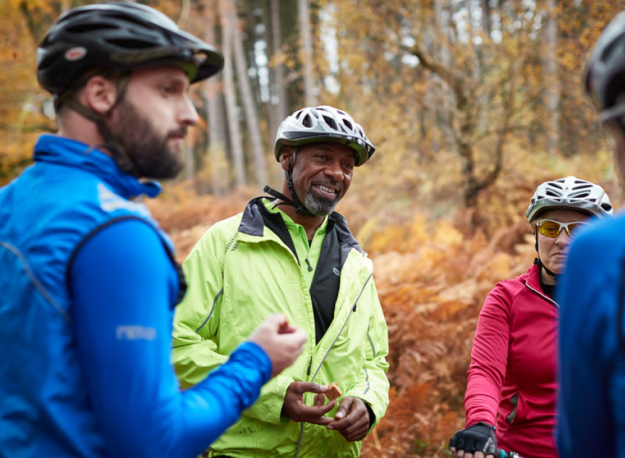 "Can't cycle to work - it's too dangerous!" "Drivers don't care about cyclists" "There aren't enough bike lanes." With a few of our top tips, you can make your cycling safer and more enjoyable. Cycling is actually one of the safest modes of transport, but also has the advantage of being fast, fun and good for your health.
"Can't cycle to work - it's too dangerous!" "Drivers don't care about cyclists" "There aren't enough bike lanes." With a few of our top tips, you can make your cycling safer and more enjoyable. Cycling is actually one of the safest modes of transport, but also has the advantage of being fast, fun and good for your health.
Here are our Cycling Safety Top Tips:
#1 Follow Some Basic Road Safety Tips
All cyclists should follow the simple guidance "see and be seen" when choosing where to ride on the road. Make sure you are in a position where you can see around you, and in particular ahead, but also ensure that other road users can see you. If you aren't sure if someone has seen you try to make eye contact until you are.
Ride assertively remembering you are a part of the traffic. Use hand signals or make eye contact with other road users to let them know what you're doing, and try to be predictable in your movements.
Look ahead and try to anticipate what is happening. If you see traffic slowing down (look for the brake lights) slow down gently and prepare to overtake or wait in the traffic. Look out for pedestrians crossing between slow moving traffic, so ride as a reasonable speed covering your brakes ready to stop.
If you aren't confident making a manoeuvre such as turning right in heavy traffic just stop where it's safe, dismount and cross on foot, before remounting. If available you could cross on foot using pedestrian crossings or at traffic lights.
Don't hesitate to ride well away from the kerb in what's known as the Primary Position. This is especially useful to avoid vehicles overtaking too closely on narrow roads or to make clear to vehicles when passing side roads that you are going straight on. If other road users do wait behind while you complete a manoeuvre try to thank them for their patience with a wave or a smile.
#2 Consider Taking a Bikeability Course
Bikeability is the new Cycling Proficiency for the 21st Century. British Cycling offers courses to its members through clubs and schools, with ever increasing ways to access a course.
Bikeability covers 3 levels ensuring that even the most experienced cyclist can learn something new to help make their journey more enjoyable.
- Level 1 introduces the basic skills needed to ride a bike in a traffic free environment
- Level 2 introduces basic on road manoeuvres such as making turns and passing parked vehicles, delivered on quiet local roads. This course is aimed at people making short trips to work or school.
- Level 3 covers more advanced on road manoeuvres, such as might be encountered on a longer rush hour commute.
All three courses include how to make appropriate decisions on clothing, bike and equipment, and help trainees select routes which are appropriate for their ability and confidence.
Link: www.bikeability.org.uk
#3 Wear a Helmet
There is no legal requirement in the UK to wear a helmet and there are arguments for and against wearing helmets and making them compulsory. However, British Cycling strongly recommends wearing a helmet for all of your riding, and insists that you wear a helmet if you're taking part in any of its competitive events.
If you're buying a helmet here are some golden rules:
- Make sure that your helmet has a CE sticker on the inside and complies with Euro standard EN1078.
- Make sure your helmet fits correctly - always try before you buy and go to a reputable bike shop that are willing to spend time with you to select the right size, shape and style for you.
- Buy a helmet that you look and feel good in - you're more likely to wear it.
- Keep your helmet with your bike so it's always ready when you are.
- Check your helmet regularly for cracks or other defects.
- If you have a crash and bash your helmet, replace it. Many manufacturers offer a cut price replacement scheme.
#4 Get Some Lights
There's no legal requirement for manufacturers to fit lights to bikes at point of sale, but if you need to ride at night, you're legally obliged to fit lights that comply with the Department for Transport's Road Vehicles Lighting Regulations.
Here's what you need to be legal:
- A white front light (this can be flashing or static)
- A red rear light (again this can be flashing or static)
- A red rear reflector
- Amber/Yellow pedal reflectors front and rear on each pedal
However...
If either your front or rear light is capable of producing a static beam, then it must comply with BS6102-3 and be marked accordingly. Purely flashing lights do not need to comply with BS6102-3, provided that their flash rate is between 1 and 4 flashes per second and their brightness 4 candela or above.
Full details of the rules surrounding lights can be found at www.dft.gov.uk
#5 Weigh the Benefits Against the Risks
Cycling is good for you and the benefits for individuals and society far outweigh the risks. Sedentary lifestyles are a far more harmful to public health than the real or perceived risks of cycling. Then there's the ‘Critical Mass' idea to consider - The more cyclists on the road, the more powerful the cycling voice becomes - the safer cycling gets. It's simple safety-in-numbers stuff. Also, the more drivers who cycle, even occasionally, the greater awareness and respect they'll have for more vulnerable road users.
Skyride, our closed-road mass-participation events, are a great way of showing how our towns and cities could be if we all cycled more.
#6 Get to know your local safe routes
Sustrans National Cycle Network has over 12,000 miles of traffic free or lightly trafficked routes throughout the country, where you can cycle more safely. 55% of the population are within 1 mile of the National Cycle Network. www.sustrans.org.uk
Your local council may have a specific cycling map for your area highlighting local traffic free routes, quiet roads, bike shops, bike parking and other infrastructure.
In partnership with Sky, we're delivering Skyride Local - enjoyable leisure rides in and around towns and cities led by qualified Ride Leaders. Skyride Local is not just a great day out on your bike, it's also a great way of building your confidence and gaining knowledge of your local safe routes.
#7 Break down the barriers
Rather than concentrating on the negatives - the risks and the excuses, concentrate on breaking down the barriers to cycling. Remember, the more people who cycle the safer it will be. Here are a few of the most commonly cited reasons to say no to cycling:
- I haven't got time
- I'll get all hot and sweaty
- I can't carry all my stuff by bike
- I'm worried about bike theft
- I haven't ridden my bike in ages, it's all rusty
All of these issues and more are addressed on our Wise Words advice pages.
#8 Get protected
Becoming a member of British Cycling gives you class leading insurance protection and a host of other benefits, as well as helping to strengthen the voice of cycling. Membership and insurance packages start at just £24 per year - that's £2 per month for peace of mind. Become a member







